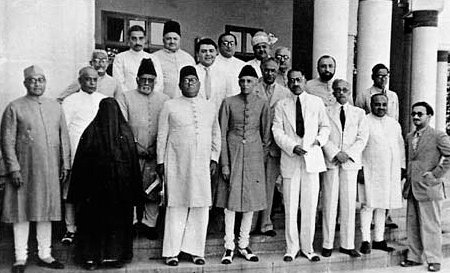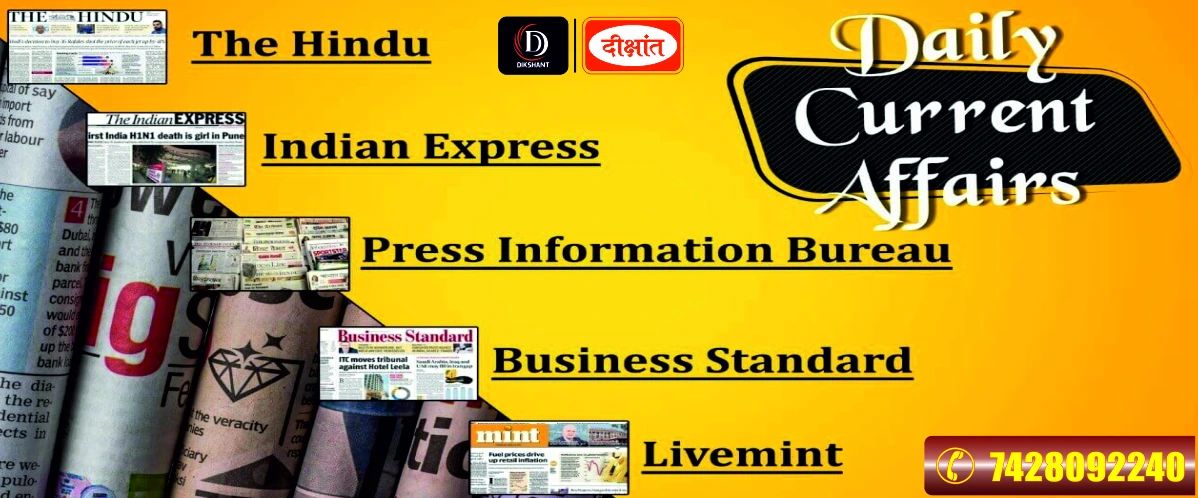The All-India Muslim League and the Emergence of Communal Politics in India (GS Paper 1, History)

Background and Evolution of the All-India Muslim League
- On December 30, 1906, the All-India Muslim League was founded in Dhaka, setting the stage for one of the most significant political developments in Indian history—the creation of Pakistan.
- Initially composed of prominent Muslim leaders like Nawab Salimullah of Dhaka, Nawab Viqar-ul-Mulk, Nawab Mohsin Ul-Mulk, and Aga Khan, the League arose out of the need to safeguard Muslim political and religious rights, particularly following the rise of the Indian National Congress (INC) and the increasing calls for a unified India.
- The formation of the League was preceded by movements such as the Aligarh Movement, which sought to promote Muslim education and raise political awareness.
- The Simla Deputation in 1906, where Muslim leaders presented demands for separate representation in legislative bodies, laid the foundation for the League's establishment.
Early Objectives and Leadership of Jinnah
- The All-India Muslim League’s early goals centered on protecting the political rights of Muslims and ensuring their representation in the British colonial administration.
- However, it was under Muhammad Ali Jinnah's leadership that the League transformed into a mass political movement.
- Jinnah’s vision for a separate Muslim state took shape in the late 1920s, culminating in his "Fourteen Points" (1929), which articulated demands for a federal structure, autonomy for provinces, and safeguards for Muslim minorities.
Key Resolutions and Agreements
- The Lucknow Pact (1916): This agreement between the Congress and the Muslim League was one of the high points of Hindu-Muslim cooperation in the struggle for independence. The Pact addressed mutual concerns, with Congress agreeing to separate electorates for Muslims, a demand of the League. While it aimed to strengthen Indian representation in legislative councils, it inadvertently sowed the seeds for increased communal divisions.
- The Lahore Resolution (1940): By 1940, the League, under Jinnah’s guidance, shifted toward advocating for the creation of Pakistan. The Lahore Resolution called for the establishment of independent states in regions with a Muslim majority in North-Western and Eastern India, setting the stage for the partition in 1947. This document marked the ideological cornerstone of the formation of Pakistan.
- Direct Action Day (1946): Jinnah’s call for Direct Action Day on August 16, 1946, led to violent communal riots, particularly in Calcutta, with thousands killed and properties destroyed. The violence further entrenched the divide between Hindus and Muslims, accelerating the demand for a separate Muslim state.
The Partition and Post-Partition
- Under Jinnah, the Muslim League became the central force in demanding Pakistan, citing fears that Muslims would be marginalized in a Hindu-majority India.
- The success of the League’s campaign culminated in the partition of India in 1947, leading to the creation of two separate nations—India and Pakistan.
- After partition, the League played a dominant role in Pakistan’s early politics but gradually fractured into multiple factions.
Communalism and the Politics of Division
- Communalism, in the context of India’s history, refers to a strong attachment to one’s religious or cultural community, often at the cost of societal unity.
- While communalism can have positive effects, such as fostering a sense of identity and community solidarity, its negative aspects—such as promoting division and intolerance between different groups—have often led to violence and conflict.
The Rise of Communal Politics in Colonial India
- Communal politics became increasingly prevalent during British colonial rule, as the British employed a "divide and rule" strategy to maintain control over India.
- This policy fueled tensions between Hindus and Muslims, making it easier for the British to govern by exacerbating divisions.
- This was evident in measures like the 1905 Partition of Bengal, which aimed to divide the Hindu-majority region of Bengal and create a Muslim-majority province, fostering religious divisions.
- The introduction of separate electorates for Muslims in 1909 further deepened these divisions, with the Muslim League becoming a vocal advocate for Muslim political rights.
- The British also supported communal forces through measures like the Communal Award (1932), which granted separate electorates to various communities, including Muslims, Sikhs, and others.
The Emergence of the Two-Nation Theory
- The rise of the Two-Nation Theory, particularly advocated by leaders like Muhammad Ali Jinnah, suggested that Hindus and Muslims were two distinct nations with separate cultures, religions, and interests.
- This idea was further entrenched by the ideology of Hindutva, promoted by figures like Vinayak Damodar Savarkar, which called for India to be a Hindu nation.
- The ideological clash between these two visions of India—one advocating for a united, pluralistic society and the other calling for religious exclusivity—eventually led to the Partition in 1947, as the Muslim League’s demand for a separate state, Pakistan, became a reality.
Post-Independence Communalism
- After India gained independence in 1947, the challenges posed by communalism did not vanish. Communal politics continued to play a role in Indian politics, especially as various political parties sought to mobilize voters based on religious identities.
- Over the decades, the rise of religious-based political ideologies has further strained India’s secular fabric.
- Communal violence remains a recurrent issue, with riots often sparked by economic or political factors.
- The use of religious identity in politics has led to the alienation of minority communities, while economic underdevelopment and political opportunism have often made communal mobilization an attractive tool for some parties.
Addressing Communalism: The Way Forward
- To combat communalism, it is crucial to reinforce India's commitment to secularism as enshrined in its Constitution.
- Measures such as the Prevention of Communal and Targeted Violence Bill, 2011 can help curb violence and the politics of religious polarization.
- Strengthening economic equity, ensuring electoral reforms, and empowering civil society can reduce the appeal of communal rhetoric.
- Additionally, media plays a vital role in combating divisive narratives.
- Responsible reporting that emphasizes India’s pluralistic values can help promote peace and coexistence among its diverse communities.
- Furthermore, strengthening the role of the judiciary in addressing communal violence and ensuring accountability can help build a more inclusive and harmonious society.
Conclusion
- The All-India Muslim League's evolution from a protector of Muslim rights to a key architect of the demand for Pakistan highlights the deepening role of communal politics in India’s history.
- The impact of communalism, particularly the legacy of partition and its aftermath, continues to shape the political and social landscape of both India and Pakistan.
- Addressing communal tensions and promoting a unified vision of progress and mutual respect is crucial for the future of a peaceful and democratic India.


